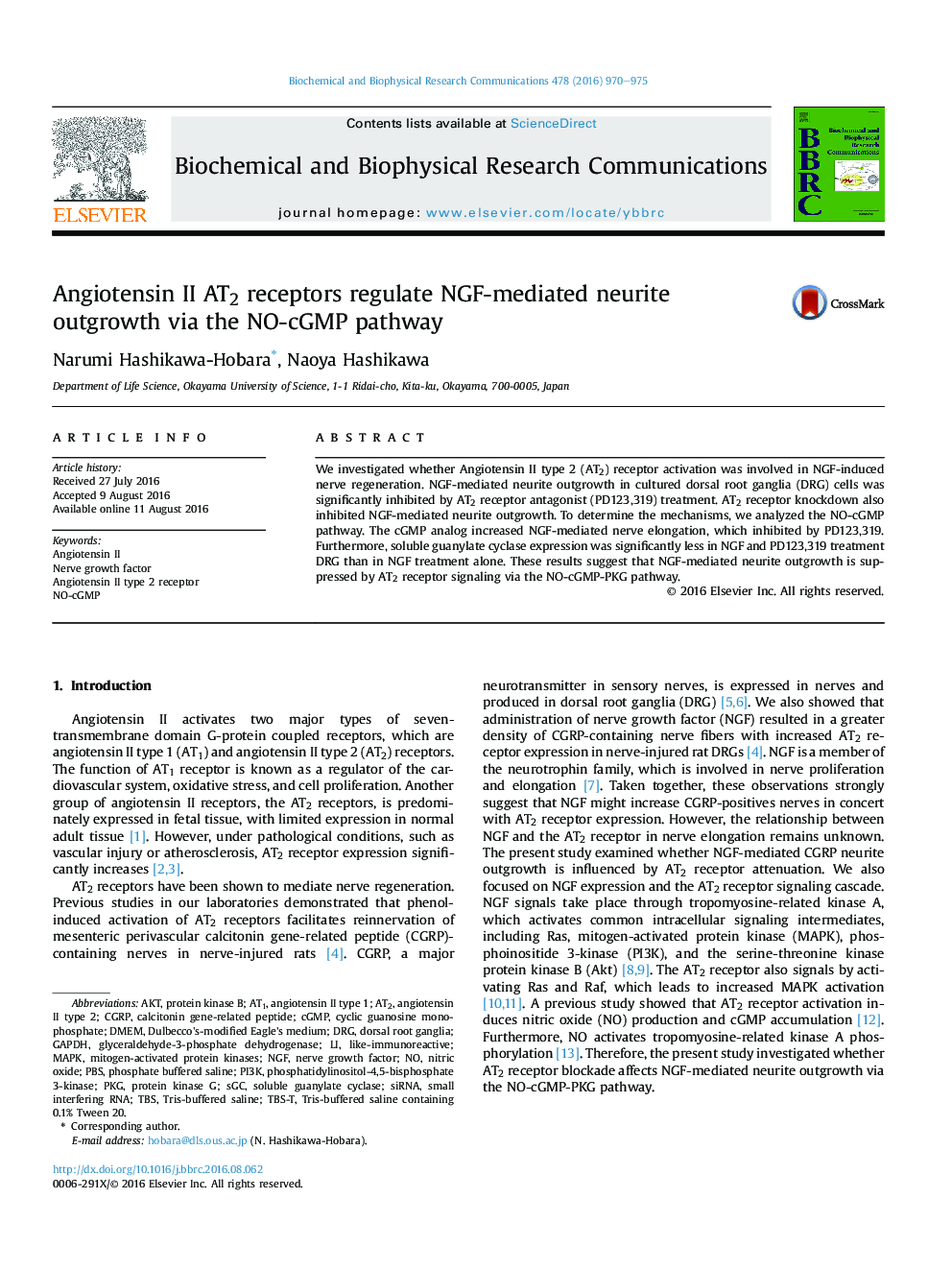| Article ID | Journal | Published Year | Pages | File Type |
|---|---|---|---|---|
| 5506842 | Biochemical and Biophysical Research Communications | 2016 | 6 Pages |
Abstract
We investigated whether Angiotensin II type 2 (AT2) receptor activation was involved in NGF-induced nerve regeneration. NGF-mediated neurite outgrowth in cultured dorsal root ganglia (DRG) cells was significantly inhibited by AT2 receptor antagonist (PD123,319) treatment. AT2 receptor knockdown also inhibited NGF-mediated neurite outgrowth. To determine the mechanisms, we analyzed the NO-cGMP pathway. The cGMP analog increased NGF-mediated nerve elongation, which inhibited by PD123,319. Furthermore, soluble guanylate cyclase expression was significantly less in NGF and PD123,319 treatment DRG than in NGF treatment alone. These results suggest that NGF-mediated neurite outgrowth is suppressed by AT2 receptor signaling via the NO-cGMP-PKG pathway.
Keywords
CGRPTris-buffered saline containing 0.1% Tween 20angiotensin II type 2NO-cGMPAT2SGCPKGAT1TBS-TNGFcGMPTBSGAPDHPI3KPBSDMEMDRGMAPKPhosphatidylinositol-4,5-bisphosphate 3-kinaseSmall interfering RNAsiRNAangiotensin II type 1Angiotensin IIAktTris-buffered salineSoluble guanylate cyclasenerve growth factorPhosphate buffered salinecyclic guanosine monophosphateNitric oxideprotein kinase Bprotein kinase Gcalcitonin gene-related peptidemitogen-activated protein kinasesdorsal root gangliaglyceraldehyde-3-phosphate dehydrogenaseAngiotensin II type 2 receptor
Related Topics
Life Sciences
Biochemistry, Genetics and Molecular Biology
Biochemistry
Authors
Narumi Hashikawa-Hobara, Naoya Hashikawa,
